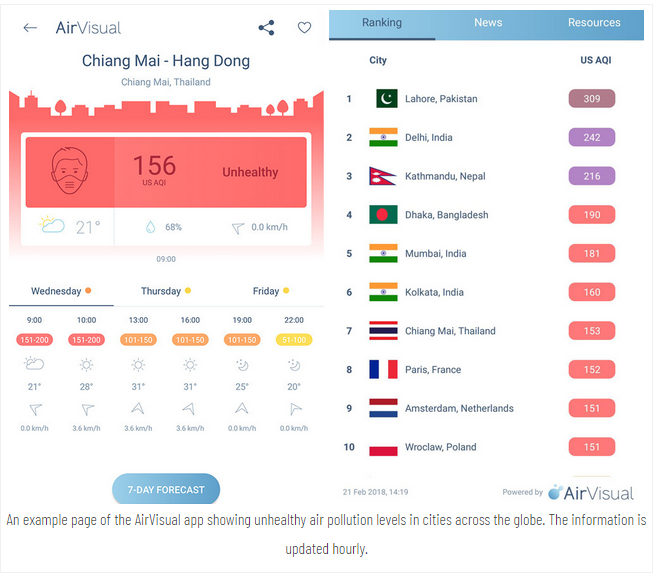AirQuality
Overview:
AirVisual is a cutting-edge application designed to monitor and measure Air Quality Index (AQI) in real-time.
Developed with the mission to empower individuals and communities with accurate air quality information,
AirVisual combines innovative technology, data analytics, and user-friendly interfaces to provide a comprehensive
solution for monitoring and improving air quality.1

Client Profile:
AirVisual’s client base includes government agencies, environmental organizations, businesses, and individual users concerned about air quality.
The application caters to a diverse audience, ranging from policymakers aiming to implement effective pollution control measures
to health-conscious individuals seeking to make informed decisions about outdoor activities.
Problem Statement:
Air pollution is a global concern, with adverse effects on public health and the environment. Existing air quality monitoring systems are often expensive, lack real-time data, or are not easily accessible to the general public. The need for a reliable, user-friendly, and affordable air quality monitoring solution led to the development of AirVisual.
Features and Functionality:
Real-Time AQI Monitoring: AirVisual provides up-to-the-minute AQI data for specific locations, allowing users to make informed decisions about their outdoor activities.
Historical Data Analysis: Users can access historical air quality data, enabling them to identify patterns and trends over time. This feature is beneficial for researchers, policy-makers, and businesses looking to analyze long-term air quality changes.
Personalized Alerts: The application notifies users when air quality in their location reaches unhealthy levels, enabling them to take precautionary measures to protect their health.
Global Coverage: AirVisual covers a vast network of monitoring stations worldwide, offering a global perspective on air quality and fostering international collaboration in addressing air pollution.
Community Engagement: Users can contribute to the application by reporting air quality observations, enhancing the accuracy and coverage of the data.
Implementation: AirVisual employs a network of ground-based monitoring stations and sensors that continuously collect air quality data.
This data is then processed using advanced algorithms to calculate the AQI, which is made accessible through the application’s user interface.
The application is available on multiple platforms, including iOS, Android, and web browsers.
Results and Impact:
Improved Public Awareness: AirVisual has significantly increased public awareness regarding air quality issues, leading to a more informed and engaged population
Policy Impact: Governments and environmental agencies utilize AirVisual data to formulate and implement targeted policies aimed at reducing air pollution and improving public health.
Health Benefits: Individuals using AirVisual have reported positive health outcomes as a result of making lifestyle adjustments based on real-time air quality information.
Research Opportunities: Researchers leverage the application’s extensive dataset for studies on air quality, climate change, and related health issues.
Future Enhancements:
Integration with Wearable Devices: AirVisual plans to integrate with wearable devices to provide users with real-time air quality information directly on their smartwatches or fitness trackers.
Predictive Analytics: Implementing predictive analytics to forecast air quality changes, allowing users to plan activities and take preventive measures in advance.
Smart City Integration: Collaborating with smart city initiatives to integrate AirVisual data into urban planning, traffic management, and public health programs.
Conclusion:
AirVisual has successfully addressed the need for an accessible, reliable, and user-friendly air quality monitoring application. With its real-time data, historical analysis, and community engagement features, AirVisual continues to make a positive impact on public health, environmental awareness, and policy formulation in the global fight against air pollution.
-
fig:app-measuring-AQI ↩